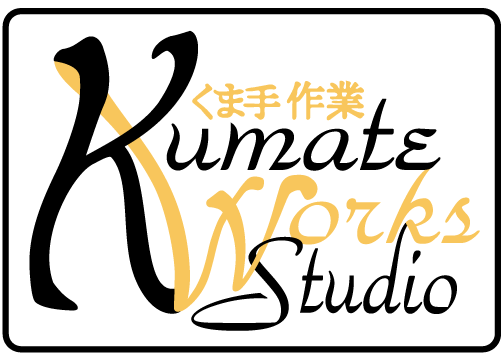4. Buy duplicates of all necessary supplies and keep them with you if possible. Organize your inventory to be accessible, easily transportable and safe.
It’s easy to be stymied by losing or breaking a necessary tool at an event, where replacements may be unavailable or expensive. The solution is pretty simple. Have backups stored with your con gear. You will never regret having 2 pairs of scissors.
If you use markers for commissions, for example, track which colors you use the most and have duplicates ready. If you use pencils, carry a sharpener and a few extras. Obviously, your ability to stock duplicates is limited by what you can carry, so focus on duplicating anything that is a necessity first.
It’s a good idea to write out a checklist, gather the supplies and see if you can work with it. If you find yourself needing other supplies during the trial, add them to the list. Keep that list with your con gear and check it off while packing.
Well before your event, do an inventory of your products. If you can, write or print up the inventory and tape it to your container. That way you know at a glance what’s in there. Replace it after each convention.
If possible, try to keep only one type of stock in each container, so you know exactly where things are when setting up and where they go when tearing down. If you need to combine multiple types in one container, choose a home for each thing and don’t deviate. Label the containers. If you stock a lot of different items, clear plastic containers can help you keep everything organized. You will be less prone to tossing things into whatever container comes to hand if you can lay hands on the right one immediately.
You are far less likely to leave something behind if everything is organized and ready to go. As stated in the last article, pack so that the first item out is the first thing that goes on the table.
If their nature permits, place your products in any packaging you use and keep them stored in whatever container you plan to take to the convention. Prepackaging saves setup time. Also, if your items are already packaged, you aren’t wasting space carrying any packaging you won’t need. If a display item can hold items while packed, why not pack them there? It saves a little time during setup and helps compact and lighten the load. For example, if you keep a bowl of buttons, fill it up now and cover it with plastic wrap or something similar.
Ideally, your container should just fit your items and should be as lightweight as possible. If it’s too large, you may pay extra charges for shipping or luggage check or have trouble fitting your stock into your vehicle. Also, if items move around, they can suffer damage. Containers that are too small run the risk of crushing things or having it pop open.
Make sure that whatever storage you use for your stock offers protection from damage. Plastic bins are a popular choice, but there are other solutions. Cardboard boxes are easily available in a wide variety of sizes and often free. If you wrap them in duct tape they can be very durable. Wood crates are probably too heavy unless they double as display materials. Bags are iffy protection for anything that isn’t soft, so I wouldn’t suggest them for anything but plush or clothing. Keep inclement weather in mind-make sure your items are safe from rain, snow and temperature changes.
Test your containers to make sure that you can move them easily. Knock them around a bit to make sure they stay closed when bumped. It’s no fun to try to gather an explosion of your stock from a convention floor. Play around with different configurations to find the most efficient means of transport. If you use multiple containers, try to find stackable items or find a way to fasten them together.
When you do your mock display at home, remember to test out the backend and at-table storage as well. Sit at the table and make sure your stock is arranged so that you can access it easily and that you can restock and break down efficiently. Going back to the last post, plan workspace and business areas, and make sure everything can be set up in appropriate ways.
Keep track of your supply and product inventory at con as carefully as you do at home. If you run out of a supply, note it while it’s fresh in your mind. Post-con, it will be easy to restock. Do this as quickly as possible and store it with your con gear and you won’t be caught out at your next event. We try to keep a notepad in the cashbox, where we know we’ll see it after the event. The same applies to product inventory. If you keep track of sales, you will end the con with a ready made list of what to replace as well as valuable business information.


Be First to Comment